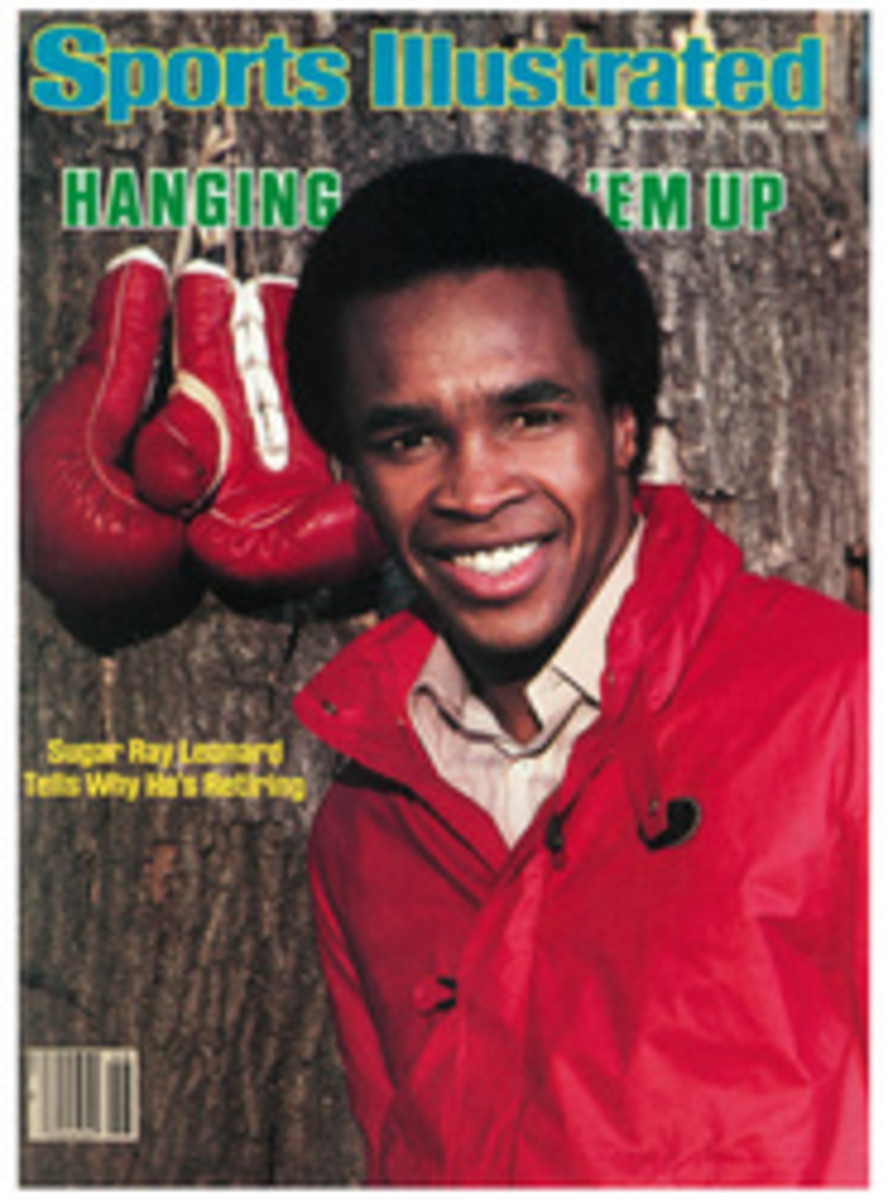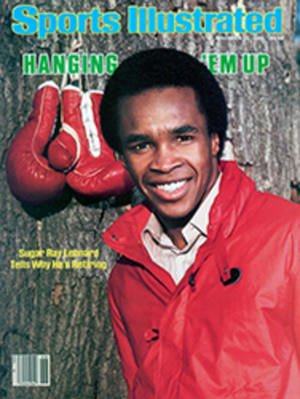
At Last, LSU Has A Who
You could learn a lot about Coach Jerry Stovall and about his Louisiana State Tigers by asking him about LSU's schedule—the same way you could learn a lot about the bees in a hive by sticking your hand into it. "You're 6-0-1, Jerry, but up to now you haven't played any Alabamas," you might have said to him before last Saturday. Instead, there was Oregon State, Rice, Kentucky, South Carolina, Ole Miss. Collectively, those teams are 7-36-2. LSU did beat Florida when the Gators were 3-0, but it can be argued from what they have done since that the Gators were teetering even then, and a 24-24 tie with Tennessee hardly helped to prove that LSU's statistical ranking as the stingiest defense in the country wasn't built on a long line of tomato cans.
The 41-year-old Stovall, who's in his third season at Louisiana State, doesn't like such talk, and he didn't become an All-America halfback and a Heisman Trophy runner-up at LSU and a two-time All-Pro strong safety with the St. Louis Cardinals by shrinking from a challenge. The glare from his cobalt-blue eyes comes through his spectacles like lasers as he says, "People don't ask 'who' first. They ask 'how many.' " End of comment.
After last Saturday, the 'who' included an Alabama team so experienced and so deep that even as late as Friday, four weeks after an inexplicable loss to Tennessee, Bear Bryant was calling his 7-1 squad "the best bunch we've ever had." And for LSU, the "how many" became seven. But the other numbers generated in the game at Birmingham's Legion Field—the most important but perhaps the least impressive being the stunning 20-10 score—left no doubt about LSU's credentials as a defensive force. Consider: Alabama was held for the entire first half without getting a single first down; Alabama, which had been the fourth-best rushing team in the nation and the fourth-best in total offense with averages of 300.5 and 446.2 yards per game, respectively, was held to 45 yards on the ground and 119 yards total.
The Tigers' defensive plan had been built on stopping Quarterback Walter Lewis, the deft runner and passer who makes the 'Bama Wishbone go. He came into the game with a 62% pass-completion average and six TD throws, all to his ace wideouts, speedsters Jesse Bendross and Joey Jones, each of whom averaged more than 20 yards per reception. Moreover, Lewis was the Tide's leading rusher with 551 yards, and there were 12—twelve!—running backs shuttling in and out regularly behind him who had averaged more than three yards per carry.
LSU's defenders were instructed to treat Lewis like a live grenade: expect an explosion at any moment, smother him whenever possible. And that they did. The key was handling Alabama's All-SEC center, Steve Mott, whose job it is to lead the option in whichever direction it's going and keep the linebackers from getting to Lewis inside before he pitches or decides to keep and cut upfield. "Mott had been eating up noseguards," said LSU Noseguard Ramsey Dardar. "I had to block him like I was an offensive lineman so our inside linebackers could get to the ball." Half a dozen times Lewis was brought down by inside linebackers Lawrence Williams and Al Richardson, LSU's leading tacklers, as he ran behind his line negotiating the option. "I have never been caught back there so many times," said Lewis afterward. "And it wasn't that I didn't know where they were coming from. They never let down. Never. They just beat us."
Yet even with a 17-0 lead after the near-perfect first half, in which Alabama was held to 10 yards rushing and 22 passing, the LSU coaches had plenty to caution the Tigers about at halftime. First, Alabama's offense was far deeper than LSU's defense, and second, momentum at Legion Field, which was packed with 77,230 fans, a vast majority of them Alabamians, could turn the moment the Tide got its first first down.
"I told our boys, 'Let's do our celebrating "on the way home,' " said Pete Jenkins, the Tigers' assistant head coach and defensive line coach. Everyone was still worried about Lewis and those two great receivers, and all those backs who had yet to break loose. "They'll play 12 running backs against us," Stovall had said somewhat worriedly on Friday. "I don't think we have 12 runners on scholarship." Maybe not, but LSU did have senior Quarterback Alan Risher, who would complete 20 of 26 passes, and a pair of freshman running backs, Dalton Hilliard and Garry James. Hilliard, a 5'8", 181-pound fireplug, set up LSU's first touchdown in the second quarter by hip-faking and tackle-breaking for 33 yards on a screen pass. He then scored the game's first TD on a slashing 16-yard run on which he outraced Alabama safeties Al Blue and Jerrill Sprinkle, who was playing for injured All-America Tommy Wilcox. Later in the quarter Hilliard took Blue's helmet on the inside of his right thigh and was replaced by James, a 5'11", 203-pound bruiser who rushed for 53 yards in helping to set up the second Tiger TD, which was scored on a three-yard pass from Risher to Tight End Malcolm Scott in the left corner of the end zone. The Tide's Craig Turner then fumbled LSU's ensuing kickoff with 53 seconds left, and Juan Betanzos kicked a 23-yard field goal to give LSU its 17-0 halftime lead.
For most of the season it has been Hilliard who has made LSU go—he had scored 11 touchdowns in seven games, fourth best in the nation—behind the Tigers' veteran and meaty front line that calls itself The Lunch Bunch. Hilliard is a hard, quick and elusive runner who can also catch passes—a star to be sure, despite his lack of height. "That's O.K.," says Tackle Clint Berry. "We open holes that are wide, not tall." But when the LSU offense took the field for the first series of the second half, Hilliard was on the sideline with that deep thigh bruise, and the Tigers couldn't advance the ball.
Instead it was Alabama on the move, taking the kickoff and marching to the LSU five. On third-and-four from there, Lewis sprinted out on an option to the right. Right Outside Linebacker Rydell Malancon cut off Lewis' option to pitch to Carter, while Left Outside Linebacker Tim Joiner slid through the hole over center opened by Dardar and chased Lewis down from behind, wrapping himself around Lewis like kudzu and forcing a fumble, which Lewis recovered—for a nine-yard loss. Thus did an apparent 'Bama touchdown drive become a field-goal drive.
Stovall was bent on keeping the offensive pressure on, however. To that end, Hilliard came back into the game on LSU's next possession, promptly caught a screen pass from Risher and fumbled it away on his own 28 after being hit by Cornerback Jeremiah Castille. Bryant knew he needed a big play and he got one: a 28-yard touchdown pass from Lewis to Jones.
Now it was 17-10, Alabama had put 10 points on the board in 25 seconds, and suddenly LSU was fighting the Alabama momentum, the roaring crowd. "Maybe last year a flash like that would have broken our morale," said Defensive Tackle Leonard Marshall, "but not now. We had stopped them all game, and 10 points wasn't going to change that." Added Dardar, "That TD pass came the one time—the one time—we didn't put enough pressure on Lewis. We just started pounding them back. If 'Bama doesn't get the ball, 'Bama doesn't score."
Indeed, 'Bama made just two first downs the rest of the game—for a total of six to LSU's 20—and immediately after the second, after the Tide had marched into LSU territory late in the game, Tackle Bill Elko chased Lewis down from behind yet again and forced Alabama's seventh fumble and fourth turnover. From there LSU simply controlled the ball the last 4:57 and then partied its way back to Baton Rouge with its first victory against Alabama since 1970 and, even better, an answer for all those skeptics who had been asking "Who?"
PHOTO
The Tigers' swarming defense forced seven Alabama fumbles, three by Lewis (10).
PHOTO
Risher completed 20 of 26 passes in LSU's 20-10 win.

